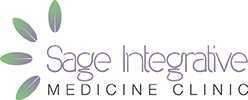Black mold is a type of fungus that can trigger an immune response. Typical reactions include sneezing, coughing, nasal congestion, and irritation of the eyes. It seldom leads to severe sickness or fatality, but it can exacerbate symptoms of asthma. While there is no cure for an allergy to black mold, a healthcare professional can identify the condition and assist in managing the symptoms.
Understanding Black Mold
What is Black Mold?
Black mold, or Stachybotrys chartarum, is a notorious type of mold characterized by its dark green or black appearance. This mold thrives in environments rich in cellulose and moisture, such as damp drywall, wallpaper, and wood. All molds, including Stachybotrys chartarum, should be removed due to potential health risks. It’s important to note that black mold is not unique in its coloration; several mold species can appear black, making accurate identification crucial for effective treatment. One telltale sign of black mold presence is a musty odor, often the first indicator of mold growth in hidden areas within indoor environments.
Health Effects of Black Mold
Exposure to black mold spores can lead to a variety of symptoms, ranging from sneezing, coughing, and eye irritation to more severe reactions such as asthma attacks. For individuals with pre-existing health conditions, prolonged exposure can exacerbate symptoms and lead to more serious health issues, particularly affecting those with respiratory conditions or compromised immune systems. It is these potential health effects that make identifying and addressing black mold exposure in indoor environments a matter of urgency.
Identifying Black Mold in Your Environment
Common Locations for Black Mold Growth
Black mold often finds its niche in warm, moist areas of a home, such as bathrooms, kitchens, and basements. It particularly thrives in spots where there is a lot of moisture, for instance around leaks in roofs, windows, or pipes, or where there has been flooding. Black mold can colonize a variety of surfaces, from the cellulose-rich materials it prefers to even in the dust and insulation within air ducts.
Diagnosing and Testing for Black Mold
When it comes to diagnosing black mold in homes or other indoor environments, professional inspection and testing are invaluable. These processes involve assessing moisture levels and using specialized tools to detect mold growth in areas not visible to the naked eye. For a more hands-on approach, home testing kits allow individuals to collect samples and send them off to labs for analysis, offering a preliminary measure for identifying mold presence.
Health Risks and Symptoms of Exposure
Understanding the Risks
While all molds can pose risks to health, black mold is particularly concerning due to the severe symptoms it can cause in certain individuals. These include not only the allergic reactions common to mold exposure but also more severe complications such as respiratory issues, skin irritation, and even neurological problems in those highly sensitive or exposed over long periods. It is the combination of these potential health effects with the often-hidden nature of mold growth that underscores the importance of vigilance and prompt action in dealing with black mold.
Prevention and Remediation Strategies
Tips for Preventing Black Mold Growth
Preventing black mold involves controlling indoor moisture levels. This can be achieved by fixing leaks promptly, using exhaust fans to ventilate damp areas, and ensuring HVAC systems are well-maintained to avoid condensation. Regular cleaning and the use of mold-resistant materials during construction or renovation can also significantly reduce the risk of mold growth.
Removing Black Mold Safely
When it comes to removal, the complexity of black mold cleanup often necessitates professional intervention, especially when large areas are affected or when the mold is growing in hard-to-reach places.
For smaller areas, DIY cleanup can be undertaken with caution, ensuring that protective gear is worn to avoid exposure to mold spores. Regardless of the approach, addressing the underlying moisture problem is key to preventing recurrence.
When to Seek Help
Consulting Health and Mold Professionals
Persistent symptoms related to black mold exposure should not be ignored. Consulting a healthcare provider can help in diagnosing and managing allergies or other conditions exacerbated by mold.
Similarly, professional mold inspection and removal services play a critical role in safely and effectively dealing with mold in indoor environments, ensuring that both the mold and its underlying causes are addressed.
Integrating Wellness with Black Mold Prevention
Sage Integrative Medicine Clinic’s Approach
At Sage Integrative Medicine Clinic, we understand that environmental factors like black mold exposure can significantly impact health and well-being. Our holistic approach to medicine emphasizes the importance of a healthy living environment, alongside cutting-edge treatments and therapies designed to optimize overall health.
From BOOST IV Therapy to personalized wellness programs, we offer a range of services aimed at enhancing your body’s resilience against environmental challenges like mold Sage Integrative Medicine Clinic.
Explore Wellness Solutions
For those seeking to mitigate the health risks associated with black mold, or to simply enhance their overall wellness, we invite you to explore the comprehensive solutions offered at Sage Integrative Medicine Clinic.
Our team is dedicated to providing personalized care and expert guidance on creating a healthier, mold-free living environment. Visit our website today to learn more about how we can support your journey towards optimal health.
